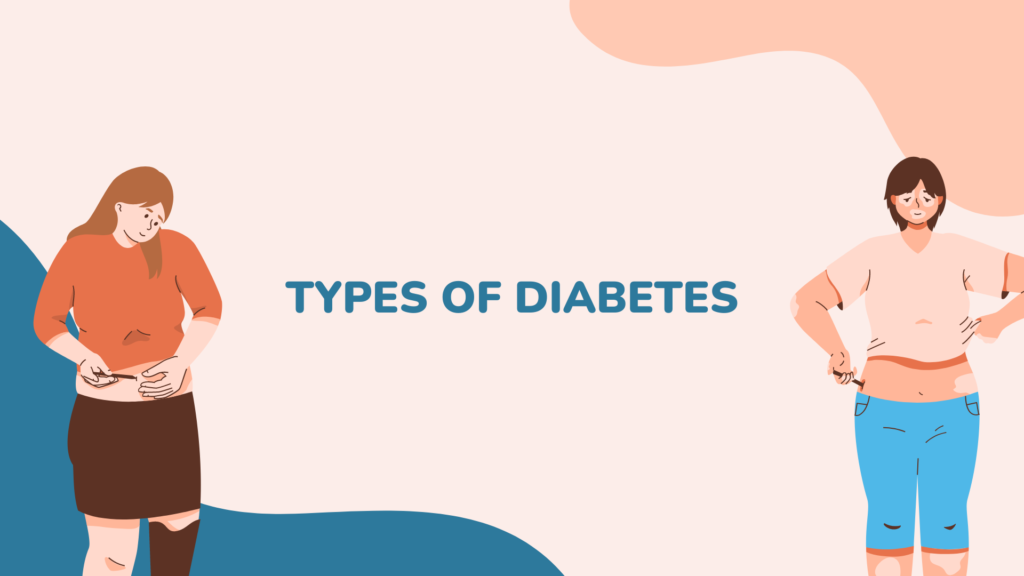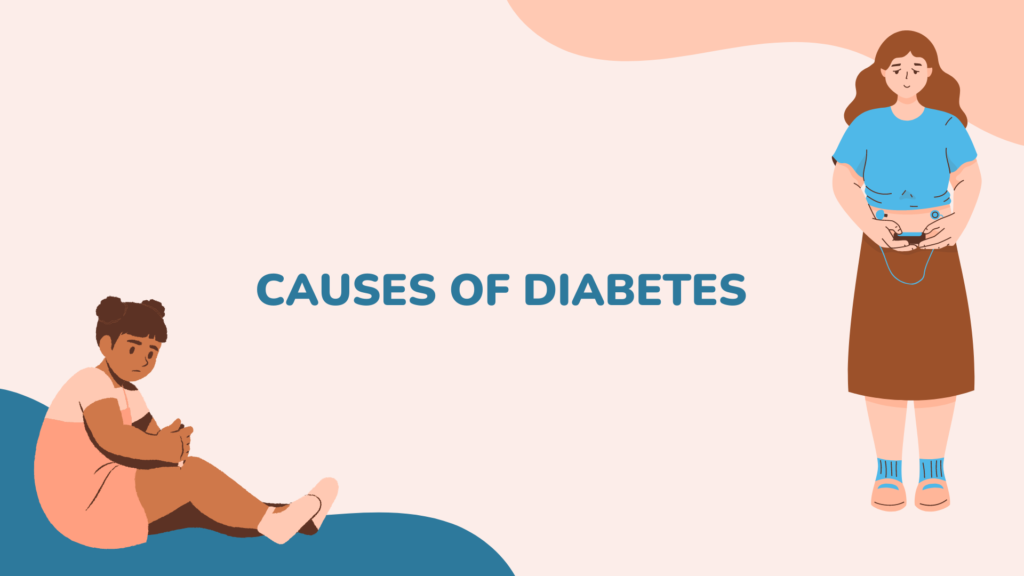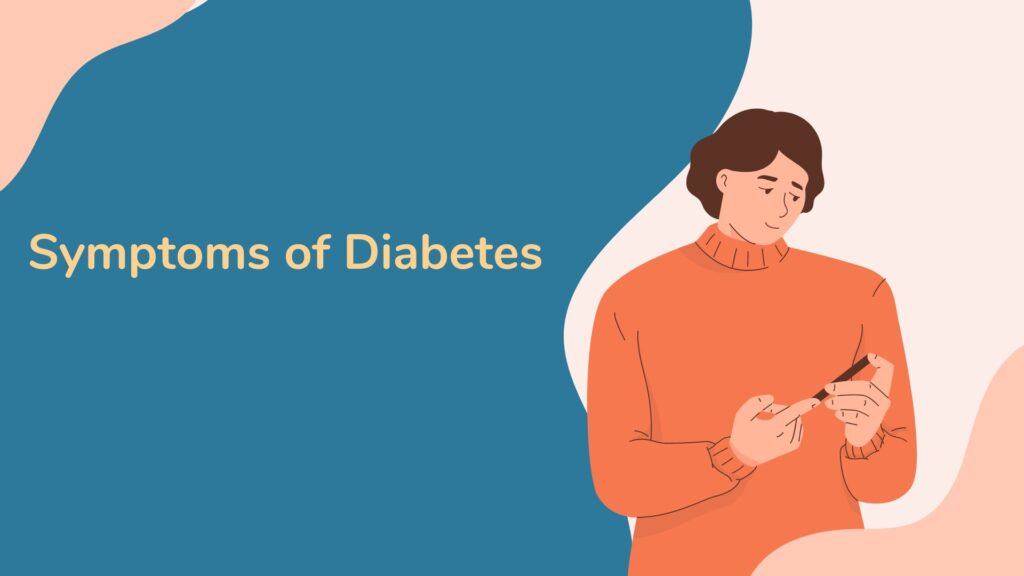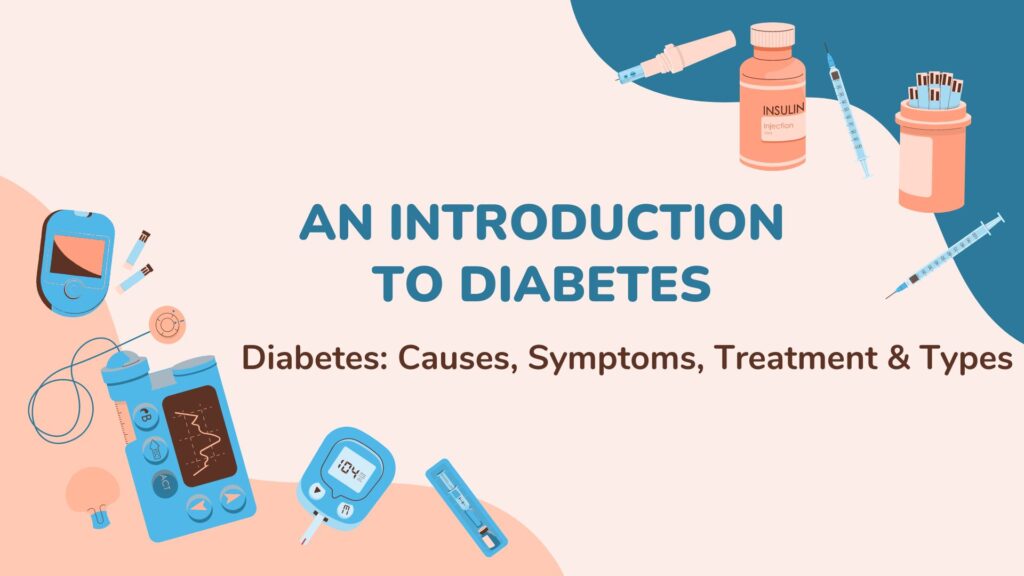Do you know, one in six people in the world with diabetes is from India? The fast, busy lifestyle is causing ignorance for health, leading to a rise in patients of diabetes even at a young age. A chronic and metabolic disease, diabetes develops when your pancreas doesn’t make enough insulin or when your body isn’t responding to the effects of insulin properly. The disease can affect many parts of your body, including heart, eyes, kidneys, feet, and legs. Let us know more about this disease, so we can take precautions to avoid it.
Types of Diabetes

Type 1 diabetes: An autoimmune disease, Type 1 diabetes, is diagnosed in children and young adults. It attacks your immune system and destroys insulin-producing cells in your pancreas for unknown reasons.
Type 2 diabetes: The most common type of diabetes, Type 2 diabetes occurs when your body doesn’t make enough insulin and/or your body’s cells don’t respond normally to the insulin. Even though it mainly affects adults, children can have it as well.
Prediabetes: This is a stage before Type 2 diabetes, where your blood glucose levels are higher than normal but not high enough to be diagnosed with Type 2 diabetes.
Gestational diabetes: This form of diabetes develops in some people during pregnancy. Usually, Gestational diabetes goes away after pregnancy, but if you are suffering from it, you’re at a higher risk of developing Type 2 diabetes later in life.
Other Types of Diabetes
Type 3c diabetes: When your pancreas experiences damage, affecting its ability to produce insulin, then it is Type 3c diabetes.
Latent autoimmune diabetes in adults (LADA): Just like Type 1 diabetes, LADA also occurs from an autoimmune reaction, but it develops much more slowly than Type 1.
Maturity-onset diabetes of the young (MODY): Also called monogenic diabetes, MODY happens due to an inherited genetic mutation that affects how your body makes and uses insulin.
Neonatal diabetes: A rare form of diabetes, Neonatal diabetes occurs within the first six months of life. It is also a form of monogenic diabetes. Around 50% of babies with neonatal diabetes have the lifelong form called permanent neonatal diabetes mellitus, and for the other half, the condition disappears within a few months from onset. However, it can come back later in life.
Brittle diseases: This is a form of type 1 diabetes. Brittle diabetes is marked by severe and frequent episodes of high and low blood sugar levels. Often, this instability leads to hospitalization
Causes of Diabetes

Insulin resistance: Mainly, Type 2 diabetes results from insulin resistance. It happens when cells in your fat, muscles and liver don’t respond as they should to insulin. Conditions like lack of physical activity and healthy diet, obesity, hormonal imbalances, genetics and certain medications contribute to varying degrees of insulin resistance.
Autoimmune disease: LADA and Type 1 diabetes develops when your immune system attacks the insulin-producing cells in your pancreas.
Hormonal imbalances: In the period of pregnancy, the placenta releases hormones that cause insulin resistance. If your pancreas can’t produce enough insulin to overcome the insulin resistance, you can develop gestational diabetes. Also, some other hormone-related conditions like acromegaly and cushing syndrome can cause Type 2 diabetes.
Pancreatic damage: Due to some injury or surgery, a physical damage to your pancreas can impact its ability to make insulin, resulting in Type 3c diabetes.
Genetic mutations: Some genetic mutations can cause neonatal diabetes and MODY. Along with this, prolonged use of certain medications can also lead to Type 2 diabetes, including HIV/AIDS medications and corticosteroids.
Symptoms of Diabetes

- Dry mouth and increased thirst (polydipsia)
- Frequent urination
- Fatigue
- Blurred vision
- Unexplained weight loss
- Tingling in your hands or feet or numbness
- Slow-healing cuts or sores
- Frequent infections in skin and/or vaginal yeast
Treatment of diabetes
Even though diabetes is not completely curable, changes in diet and weight loss can help you to reach and hold normal blood sugar levels without medication. Here are some treatments for diabetes.
Treatments for all types of diabetes
Healthy diet: Consuming a healthy diet can help you control your blood sugar. So, include more fruits, vegetables, lean proteins and whole grains in your diet. These highly nutritious and low in fat and calories food will help you cut down on saturated fats, refined carbohydrates and sweets.
Regular physical activity: A regular physical activity can be helpful for you. It lowers your blood sugar level by moving sugar into your cells, where it’s used for energy. Along with this, it makes your body more sensitive to insulin, which means your body needs less insulin to transport sugar to your cells.
Treatment for type 1 and type 2 Diabetes
For type 1 diabetes, treatment involves insulin injections or the use of an insulin pump, frequent blood sugar checks, and carbohydrate counting. Pancreas transplant or islet cell transplant, can also be an option for some people with type 1 diabetes.
Treatments, for type 2 diabetes,b lifestyle changes, controlling blood sugar along with oral diabetes drugs, insulin or both.
Insulin: This treatment is for people with Type 1 diabetes. They should inject insulin to manage blood sugar to survive. Many types of insulin are avaiable such as short-acting (regular insulin), rapid-acting insulin, long-acting insulin and intermediate options. Based on your needs, your provider can prescribe a mixture of insulin types.
Oral drugs: Oral drugs help manage blood sugar levels in people who have diabetes but still produce some insulin — mainly people with prediabetes and Type 2 diabetes. Oral medication can also be needed by people with gestational diabetes.
Transplantation
Pancreas transplant can be an option, in some people who have type 1 diabetes. A successful pancreas transplant would no longer need insulin therapy.
Bariatric surgery
This treatment is helpful for some people with type 2 diabetes who are obese and have a body mass index higher than 35. Bariatric surgery helps people to lose weight by changing their digestive pattern to reduce the amount of calories they consume and absorb.
Monitoring blood sugar: Blood sugar monitoring provides you information on how to manage your diabetes on a daily, and sometimes even hourly basis. By conducting careful blood sugar testing, you can ensure that your blood sugar level remains within your target range. Generally, people with type 2 diabetes who aren’t taking insulin, check their blood sugar much less often.
Treatment for gestational diabetes
Monitoring your blood sugar level is essential to keeping your baby healthy. During labor, your provider will monitor your blood sugar level. If there is a rise in your blood sugar, your baby may release high levels of insulin, leading to low blood sugar right after birth.
Treatment for prediabetes
Usually, healthy lifestyle choices can be an effective treatment for prediabetes as it can help bring your blood sugar level back to normal.



11 Comments
Pingback: Heart Diseases- Causes, Symptoms, Treatments & Types
I visited many web pages except the audio quality for audio songs existing at this website is really fabulous.
Your point of view caught my eye and was very interesting. Thanks. I have a question for you.
Your article helped me a lot, is there any more related content? Thanks!
I do trust all of the concepts you have offered in your post.
They are really convincing and will definitely work. Still, the posts are very quick for
novices. May you please extend them a little from subsequent time?
Thank you for the post.
Very good blog! Do you have any helpful hints for aspiring writers?
I’m hoping to start my own blog soon but I’m a little lost on everything.
Would you advise starting with a free platform like WordPress or go for a paid option? There are so many options out there that I’m completely confused ..
Any tips? Kudos!
Hello! This is my 1st comment here so I just wanted to give a quick shout out and say I
really enjoy reading through your articles. Can you suggest any other blogs/websites/forums
that deal with the same subjects? Thanks!
I don’t think the title of your article matches the content lol. Just kidding, mainly because I had some doubts after reading the article.
Good article. I am experiencing a few of these issues as well..
What’s up to every , since I am actually eager of reading this webpage’s post to be updated daily.
It carries nice material.
Hi! Someone in my Facebook group shared this website with us so I came to give it a look.
I’m definitely enjoying the information. I’m bookmarking and will be tweeting
this to my followers! Excellent blog and wonderful design.
casino en ligne francais
Undeniably consider that that you said. Your favourite
justification appeared to be on the internet the easiest thing to
take note of. I say to you, I certainly get annoyed while other folks think about issues that they plainly do not know about.
You controlled to hit the nail upon the highest and defined out the entire thing
with no need side-effects , folks can take a signal. Will probably be again to get more.
Thanks
casino en ligne
I know this if off topic but I’m looking into starting my own blog and was curious what all is
needed to get set up? I’m assuming having a blog like yours would cost a pretty penny?
I’m not very internet savvy so I’m not 100% sure. Any suggestions or advice would be greatly appreciated.
Thank you
casino en ligne fiable
Awesome blog! Do you have any suggestions for aspiring
writers? I’m planning to start my own blog soon but I’m a little lost on everything.
Would you suggest starting with a free platform like WordPress or
go for a paid option? There are so many choices out there that I’m totally confused ..
Any suggestions? Thanks a lot!
casino en ligne
These are truly impressive ideas in about blogging. You have touched some nice things
here. Any way keep up wrinting.
casino en ligne
This article gives clear idea for the new people of blogging, that genuinely how to do blogging and site-building.
casino en ligne
Magnificent beat ! I would like to apprentice while you amend
your site, how could i subscribe for a blog website? The account helped me a acceptable deal.
I had been tiny bit acquainted of this your broadcast provided bright clear
concept
casino en ligne France
I always used to read piece of writing in news papers but now as I am a
user of web therefore from now I am using net for articles or reviews, thanks to web.
casino en ligne
A person necessarily lend a hand to make critically articles I would
state. That is the first time I frequented your website
page and so far? I amazed with the research you made to make this actual submit extraordinary.
Great job!
casino en ligne
Hey I know this is off topic but I was wondering if you knew of any widgets
I could add to my blog that automatically tweet my newest twitter updates.
I’ve been looking for a plug-in like this for quite some time and was
hoping maybe you would have some experience with something like this.
Please let me know if you run into anything. I truly enjoy reading
your blog and I look forward to your new updates.
casino en ligne